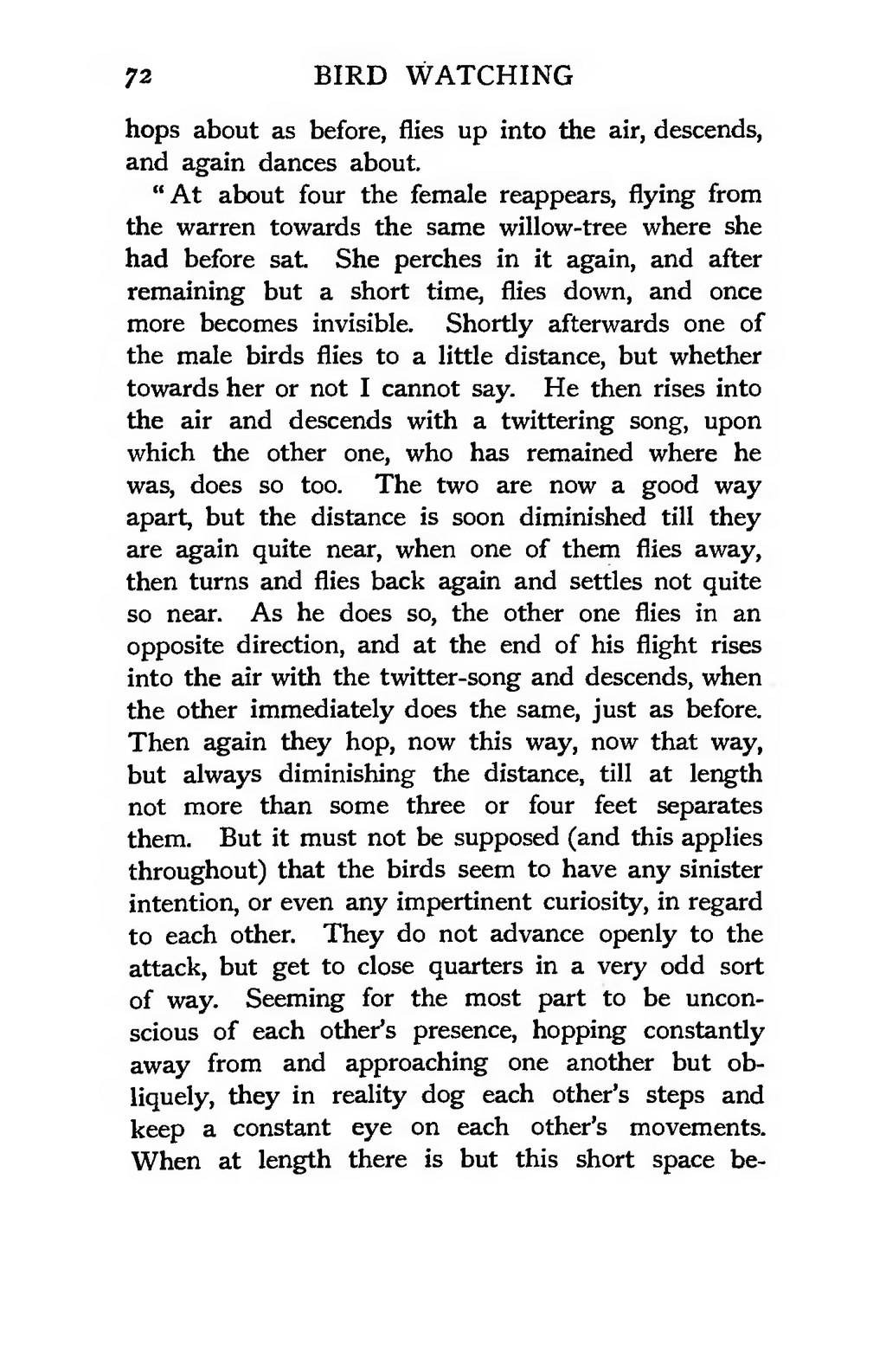hops about as before, flies up into the air, descends, and again dances about.
"At about four the female reappears, flying from the warren towards the same willow-tree where she had before sat. She perches in it again, and after remaining but a short time, flies down, and once more becomes invisible. Shortly afterwards one of the male birds flies to a little distance, but whether towards her or not I cannot say. He then rises into the air and descends with a twittering song, upon which the other one, who has remained where he was, does so too. The two are now a good way apart, but the distance is soon diminished till they are again quite near, when one of them flies away, then turns and flies back again and settles not quite so near. As he does so, the other one flies in an opposite direction, and at the end of his flight rises into the air with the twitter-song and descends, when the other immediately does the same, just as before. Then again they hop, now this way, now that way, but always diminishing the distance, till at length not more than some three or four feet separates them. But it must not be supposed (and this applies throughout) that the birds seem to have any sinister intention, or even any impertinent curiosity, in regard to each other. They do not advance openly to the attack, but get to close quarters in a very odd sort of way. Seeming for the most part to be unconscious of each other's presence, hopping constantly away from and approaching one another but obliquely, they in reality dog each other's steps and keep a constant eye on each other's movements. When at length there is but this short space be-

